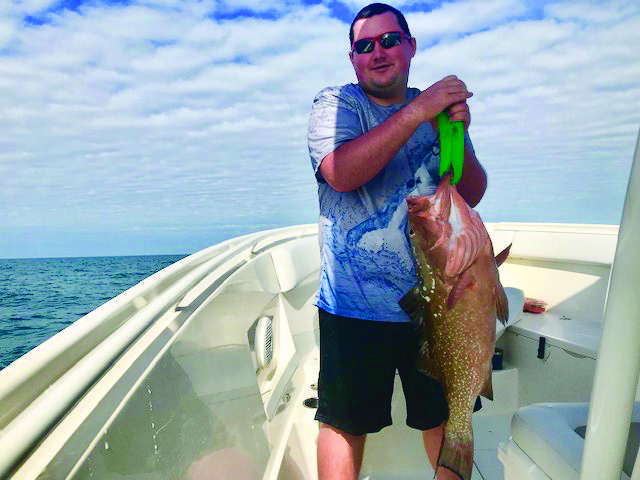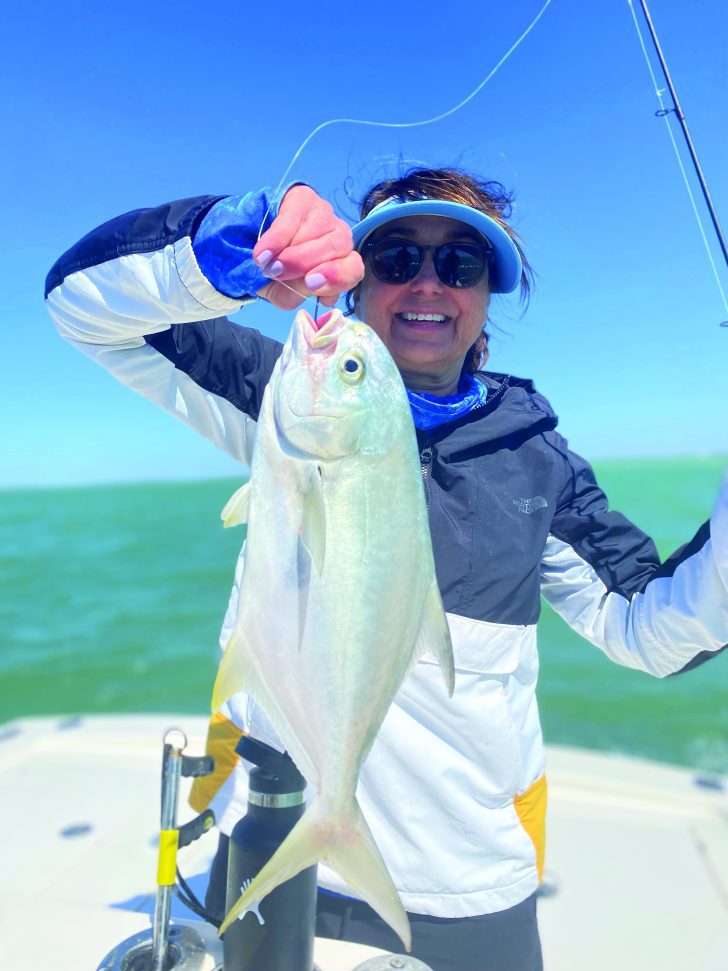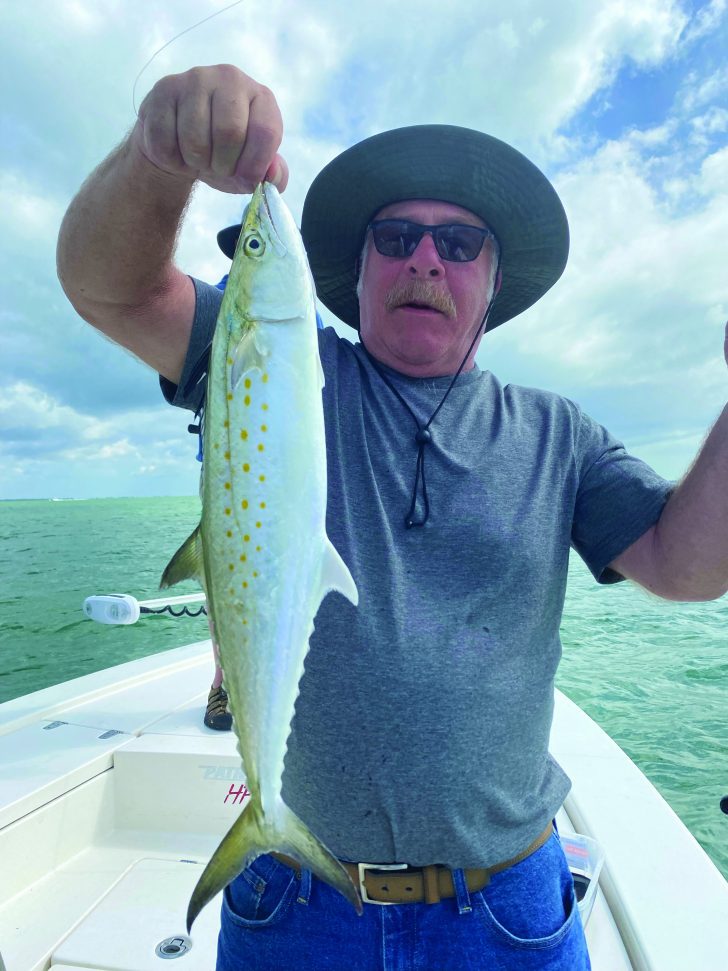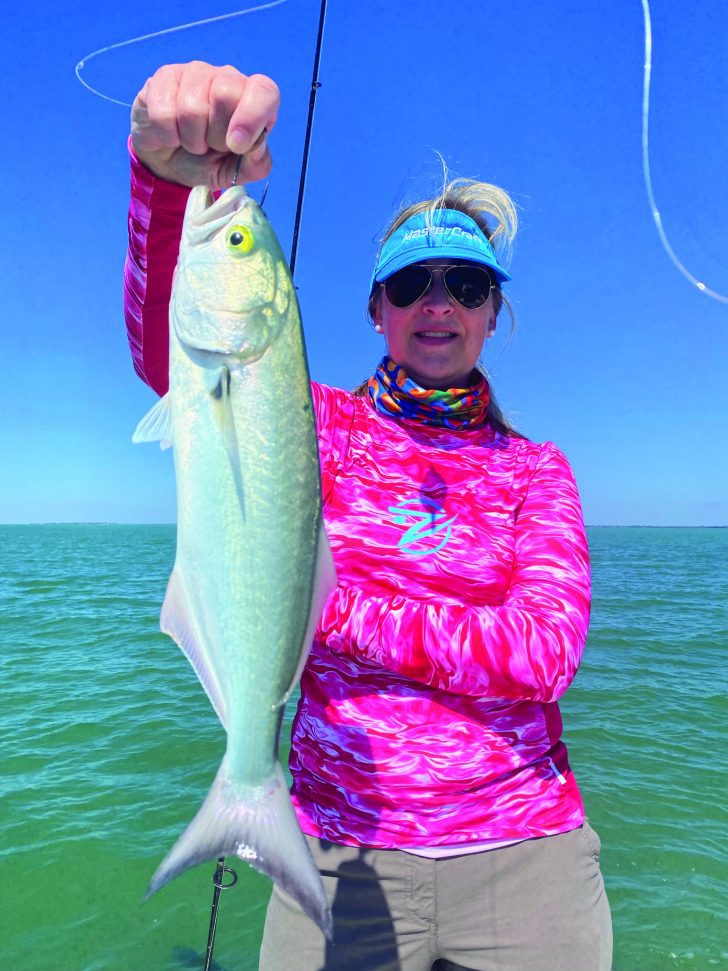By: Capt. Terry Fisher
Inshore fishing during the month of April should offer huge opportunities with water temperatures on a sustained rise, stronger and higher tides bringing forth more bait accompanied by migratory species throughout the area. Tarpon, snook, cobia, mackerel, pompano, and big seatrouts will be the most ‘sought after’ inshore quarry for many anglers. Even though fishing can be productive any month during the year, April is a ‘transition’ month for action-packed opportunity.


The best times to fish will be on rising or receding tides. Water movement generates oxygen that fish require and thrive on. It gives them energy and allows them to move to areas that hold food as well as protection. Rising spring tides allow anglers access to more remote and less pressured areas that they were not able to access during the lower winter tides. Regardless of the target species, water movement makes a tremendous difference.
April offers opportunities for a ‘fish of a lifetime’. The right bait, the right location and the right presentation are all critical to accomplishing this. I suggest the following tactics:

Snook; I suggest free-lining pilchards or threadfins on the top of and incoming or outgoing tide around points of passes, mangroves, docks and other structures (rocks, oyster bars, etc.). I prefer light tackle such as; 3000-4000 series spinning reels on a 8/17 lb. but strength rods with 10 to 15 lb. braided line and 30-40 lb. fluorocarbon leaders. 1/0-2/0 hooks.
Tarpon; like a multitude of baits including big herring, ladyfish, mullet, catfish and pinfish (dead or alive). Fish the seabed or suspend under a cork. Naturally, heavier equipment is required. I use 6000 to 8000 series reels, 65lb.test line with 80lb. fluorocarbon leaders. Leaders need to be the length of the fish you anticipate catching. 7/0-9/0 circle hooks.
Redfish; use cut pinfish or larger shrimp close to and under the mangrove roots on incoming tides. Place bait on weighted jig head of 1/8-1/4oz. to hold bait in place.
Seatrout, pompano, spanish mackerel; use light tackle with 30lb. monofilament leaders under a cork in about 3-5ft. of water over grass beds. Use a 1/8 to 1/4oz jig head and suspend a shrimp just above the seabed. Look for milky green colored water. Artificial presentations such as paddle tails, top water, spoons and twitch baits all work.
Offshore; is totally wind dependent. There are a number of man-made reefs within a short distance from shore where anglers will find mangrove snappers, lane snappers, porgies and grouper in 35-50 ft. of water. Equipment will include a little higher rated series of reels in the 4500/5000 area. 30lb. test line with 40lb. Fluorocarbon leaders and 1/0 to 4/0 circle hooks. Weight sizes will fall into the 1-3oz. category depending on current. However, if fishing for Yellowtail, mangrove snappers and lane snappers on close inshore waters, one may have to go with a leader as light as 15lb. test. These fish can be very finicky, and one must adapt. The caveat is that using light leader will usually result in a breakoff if a large fish ‘takes the bait’. However, that’s the risk that is necessary for table fare.
Baits include, squid, shrimp, pinfish, threadfins, mullet and a lot of ‘chum’.
‘Far’ Offshore (35-45 miles out); requires the same tackle and technique as mentioned above. The water is deeper (85 to 100ft.) and for the most part anglers will have to use 2-4oz. egg sinkers to get the lines down vertically and just off the bottom of the seabed. Other than specified above, the baits of choice and presentations are the same. This is the area one may expect to catch bigger groupers, snappers, trigger fish and the likes. All offshore venues require a lot of ‘chum’. Always take more ‘chum’ that beer. When you’re out of ‘chum’, you’re out of business!

